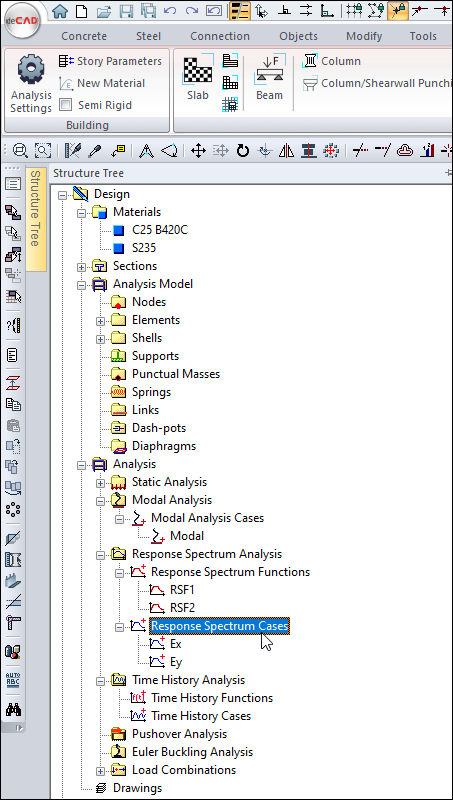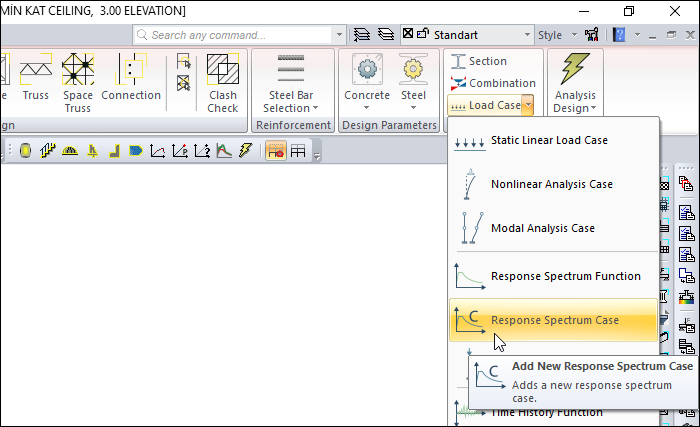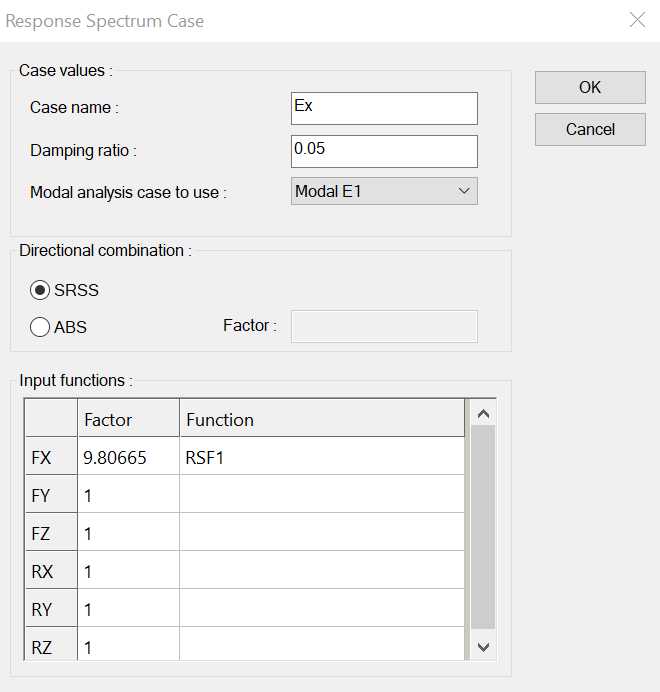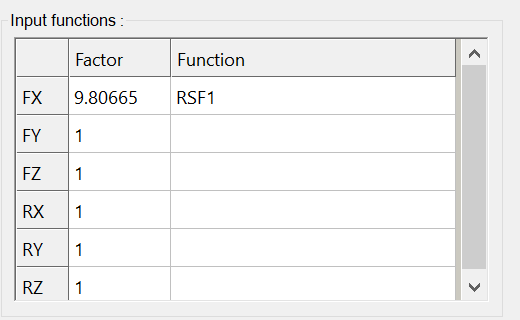Response Spectrum Case
When the analysis is made in the program, the response spectrum case is automatically created for the x and y directions in accordance with the regulation, and you do not need to change them under normal conditions. In the response spectrum case, damping ratio, directional combination method, and spectrum acceleration coefficient values are given.
The response spectrum cases are displayed in the structure tree under the Analysis folder.

Location of the Response Spectrum Case Command
You can access it from the Analysis and Design tab's ribbon menu under the Define heading.

Response Spectrum Case Dialog

Specifications |
Case name  A definition is given. |
Damping ratio  The elastic acceleration spectrum is defined for 5% damping in the TDY Seismic Code . A value of 0.05 is appropriate. |
Modal analysis case to use  For which modal situation the behavior spectrum state will be applied is selected. |
Directional combination  The modal combination produces a single value for each value of displacement, force, or stress, depending on the direction of motion. Certain methods are used and combined to produce a single result with the values of these aspects. For the directional joining method, you can choose one of two methods. SRSS ( Square Root of the Sum of Squares) Method ABS (Absolute Sum) Method (Sum of Absolute Values) |
Input Function  Determine the function of the response spectrum and the factor of the function in the relevant direction. The values determined by the program during the analysis are in accordance with the TBDY 2018 regulation and you do not need to change them unless you have to specify otherwise. This factor is defined as the gravitational acceleration value. The earthquake load reduction coefficient is taken into account when using the design spectrum. |
Next Topic
